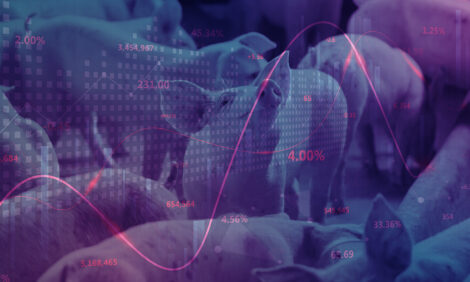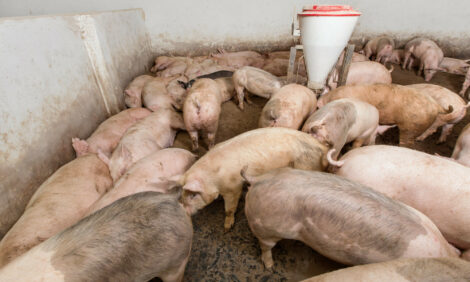



Republic of Korea - Livestock and Products Annual - 2011
Pork production in 2012 is set to rapidly expand but will still remain slightly below the levels prior to the outbreak of foot and mouth disease (FMD), according to the latest GAIN report from the USDA Foreign Agricultural Service.Swine Production
The swine and pork sector were hit the hardest by the FMD outbreaks with over 3.4 million pigs, or one-third of total inventory, culled. The industry is steadily rebuilding, encouraged by record high domestic pork prices. Sow inventories have increased 61,000 in just three months, from March to June. At this same rate, the industry will be able to add another 120,000 sows by the end of 2011. An additional 31,000 sows could be added to this figure under the duty-free tariff rate quota (TRQ).
Compound feed prices as of July are up roughly 15 per cent from last year’s annual average. Higher-priced feed, however, has not discouraged farmers from re-building their herds since swine and pork prices are at record levels.
Given the rapid increase in sow inventories, the 2011 production estimate has been raised to 12.1 million. The recovery is expected to carry on into 2012 with production estimated at 14.6 million, just slightly below pre-FMD levels. However, as explained in more detail below, production beyond 2012 will likely flatten because of disease management and livestock waste disposal requirements, as well as greater volumes of imported pork resulting from the EU-Republic of Korea free trade agreement (FTA) and the pending US-Republic of Korea FTA.
Slaughter
Slaughter numbers for 2011 are adjusted upwards to 11 million in order to reflect increased piglet production. Likewise in 2012, increased production will result in more pigs going to market. Pig slaughter is forecast at 13.3 million in 2012, up more than two million from the previous year.
Stocks
In 2012, swine farmers will continue to increase herd sizes. However, it is unlikely that total inventories will reach levels prior to the FMD outbreak for the following four reasons:
- In the wake of the FMD crisis, the Korean government established minimum barn space requirements in order to prevent the rapid spread of livestock diseases. The minimum space for sows and porkers is 1.4 square metres and 0.8 square metres, respectively.
- After the FMD clean-up was finished, many regional governments imposed a minimum distance requirement for swine farms located in proximity to residential areas. Farms in operation prior to this law went into effect are exempt until they re-populate. Residents want these nearby farms to shut-down.
- Disposal of livestock manure in the open sea will be prohibited from 1 January 2012. Farms without access to manure treatment facilities will be prohibited from raising livestock.
- In the next two to three years as Korea rebuilds its swine herd, the EU-Korea FTA, which was implemented on 1 July 2011, and the pending US-ROK FTA are expected to put downward pressure on local production and inventories.
Pig Meat Production
The 2011 pork production forecast has been revised upward to 835,000 metric tons (MT) to reflect the industry’s fast-paced recovery. Similarly, domestic pork production in 2012 is projected to increase to 1.0 million metric tons (MMT), which is just slightly below pre-FMD levels.
The shortage of domestic pork has caused prices to skyrocket, breaking all past records. Average retail pork prices have jumped 40 per cent since November with prices hovering 24,000 won (KRW) per kg as of July. Meanwhile, average carcass prices have climbed more than 65 per cent during this period with prices in July above KRW6,500 per kg. According to the Korea Rural Economic Institute (KREI), a local agricultural think-tank, carcass prices will gradually start coming down after the summer picnic season but will remain around KRW5,000 to KRW5,300 per kg until the end of 2011. Although down, the predicted price level is still above historical averages, which will be an important factor in driving future domestic pork production.
Consumption
As domestic production increases, pork consumption is forecast to recover slightly to 1.43MMT in 2011. Consumption is expected to continue its upward advance in 2012 with consumption climbing to 1.55MMT, which is on par with consumption levels prior to the FMD crisis.
The current shortage in domestic pork, coupled with high pork prices, is pushing consumers to other meat proteins such as poultry, fish and imported red meats. The top alternatives were chicken (36 per cent) followed by Hanwoo beef (17.9 per cent), according to a KREI survey done in July.
KREI also conducts a regular survey to see where consumers are eating pork. Although more recent survey results are unavailable, the survey shows that 59 per cent of pork consumption occurred at restaurants, which would be a mix of both domestic and imported pork. Home consumption, which is made-up of more than 70 per cent domestic pork, is gradually trending downward in part because of the time consuming clean-up. This growing trend towards restaurant consumption will keep demand strong for imported pork.
US pork is set to account for 14 per cent of consumption in 2011. In 2012, this percentage is forecast to slacken to 11 per cent, but will still be above the pre-FMD level of six per cent. In order to build market share, USMEF started to aggressively promote US pork on a radio programme that started 1 August 2011. However, it is still too early to tell how this outreach might boost US pork sales and market share.
Trade
In attempts to curb rising pork prices, the Korean government has announced a number of special zero-duty tariff-rate-quotas (TRQ) for selected pork imports for 2011. Most of the TRQ for processing cuts has been filled. However, the quota for chilled pork bellies is far from being filled since the trade reports that international supplies of this particular cut are limited. The following table provides a summary of all of the TRQ announcements to date.
As domestic production picks up steam, pork imports during the second half of 2011 are projected to soften. The 2011 import estimate has accordingly been trimmed back to 580,000MT. Imports of US pork during this period are forecast to double from the previous year (2010), reaching 200,000MT. In 2012, imports are expected to decline to 490,000MT with imports of US pork slipping to 170,000MT.
Further Reading
| - | You can view the full report by clicking here. |
September 2011








